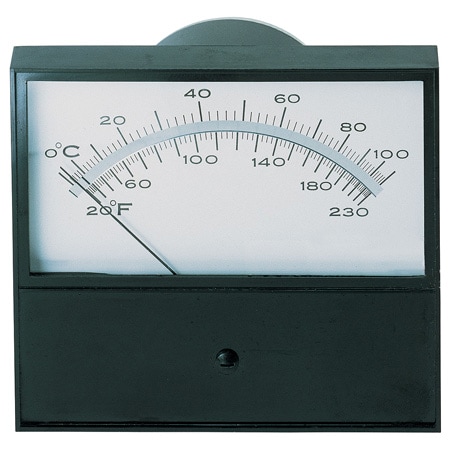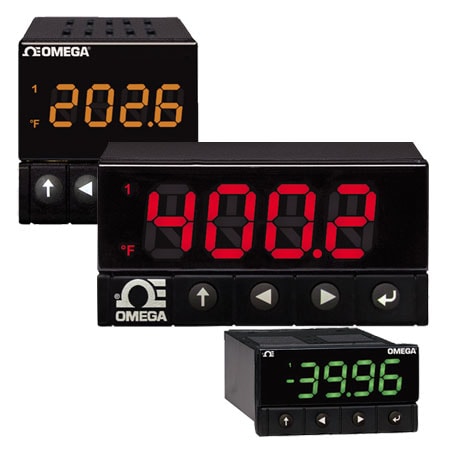A panel meter is an instrument that displays an input signal in either a digital or analog form. Many panel meters also include alarm options as well as the ability to connect and transfer data to a computer. OMEGA's iSeries panel meters are available with an ethernet option which allows the panel meter reading to be accessed across a local area network (LAN) or even through the internet.
Learn More about Panel Meters
Standard Sizes
Since panel meters are generally mounted inside an instrument panel, the panel must be cut to accommodate the panel meter. In order to provide interchangeability between panel meters, most panel meters are designed to standard DIN sizes. The most common DIN sizes are shown below.

Choose the right panel meter for your application

Temperature and Process Panel Meters
The most common types of panel meter is one that accepts a single input and provides a digital display of the signal. These meters typically accept inputs from temperature sensors such as thermocouples and RTDs as well as process signals such as 4-20 mA, 0-5 Vdc and 0-10 Vdc.
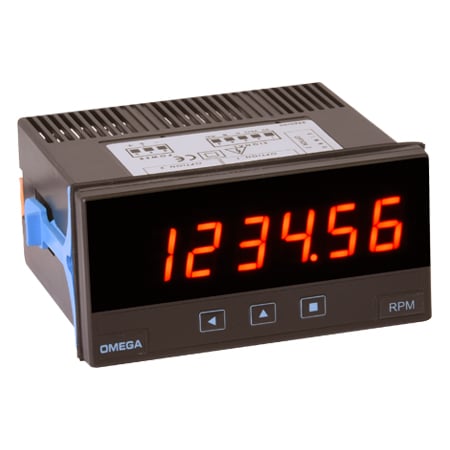
Totalizers
A totalizer is a type of panel meter that provides a summation over time of the input signal. Totalizers are commonly used with pulse inputs to provide a count of the number of pulses. This is typically used in flow measurement applications.
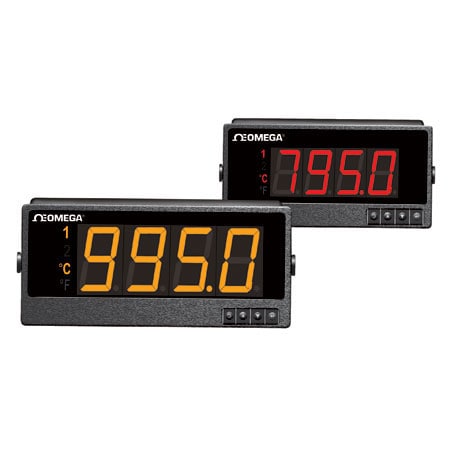
Large Display Panel Meters
Large display panel meters are commonly used when the display must be visible at a distance. OMEGA's ILD series features digits as large as 4 inches in height.
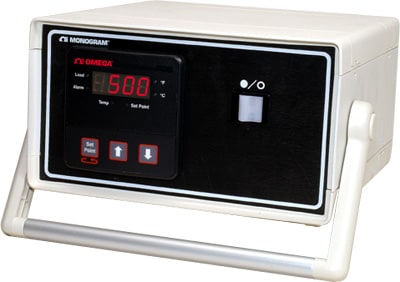
Benchtop Meters
OMEGA offers panel meters built into a benchtop case. The benchtop case provides portability and is commonly used in laboratory applications.
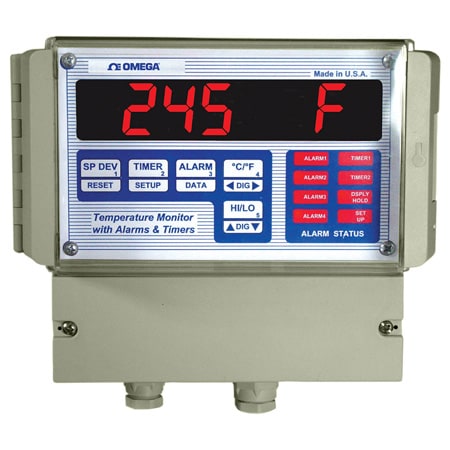
Wallmount Meters
For those applications where a panel is not available, OMEGA also offers wall mount indicators. The benchtop case provides portability and is commonly used in laboratory applications.
